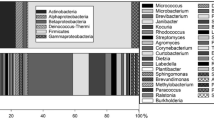Abstract
DEMANDS for new means to solve man's nutritional needs when the pressure of population intensifies or when he attempts to travel in space have suggested the use of single cell organisms as food. Hydrogenomonas eutropha, a hydrogen-fixing bacterium, could effectively control the atmosphere of a space cabin as well as providing nourishment1. The protein is of high biological value2 and is well tolerated even in high concentrations in rat diets3. Human feeding trials seemed warranted and were attempted.
Similar content being viewed by others
Article PDF
References
Jenkins, D., Proc. Sixteenth Intern. Astronautical Cong., 229 (1966).
Calloway, D. H., and Kumar, A. M., J. Appl. Microbiol. (in the press).
Shapira, J., and Mandel, A., Nature, 217, 1061 (1968).
Foster, J. F., and Litchfield, J. N., Biotech. Bioeng., 41, 441 (1964).
Kaufman, B., Nelson, W. O., Brown, R. E., and Forbes, R. M., J. Dairy Sci., 40, 847 (1957).
Roberts, R. S., Brit. J. Nutrit., 8, 353 (1954).
Author information
Authors and Affiliations
Rights and permissions
About this article
Cite this article
WASLIEN, C., CALLOWAY, D. & MARGEN, S. Human Intolerance to Bacteria as Food. Nature 221, 84–85 (1969). https://doi.org/10.1038/221084a0
Received:
Issue Date:
DOI: https://doi.org/10.1038/221084a0



